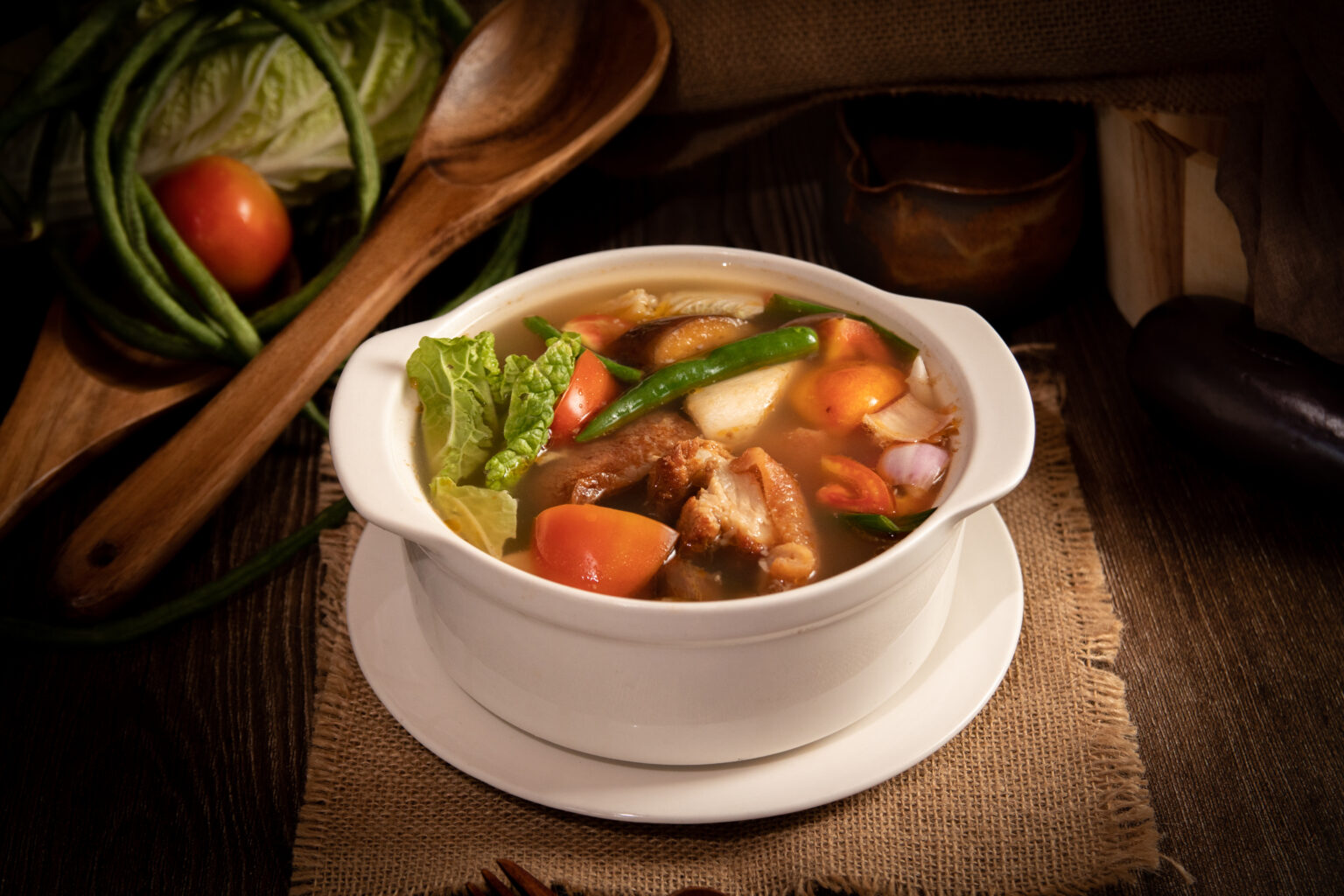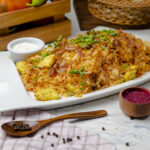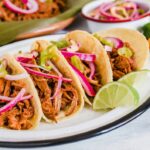The Philippines, a vibrant archipelago in Southeast Asia, is renowned for its rich cultural heritage and diverse cuisine. Influenced by Malay, Chinese, Spanish, and American flavors, Filipino food offers a delightful tapestry of tastes and textures. In this article, we will embark on a gastronomic journey and explore the top 10 most eaten foods in the Philippines, showcasing the country’s culinary treasures.
- Adobo: Adobo, often considered the national dish of the Philippines, is a beloved and versatile Filipino staple. Typically made with chicken or pork, marinated in a mixture of vinegar, soy sauce, garlic, and spices, adobo is then braised until tender. The resulting dish is savory, tangy, and rich in flavors. Adobo is often served with steamed rice, and variations can include ingredients like coconut milk or vegetables.
- Sinigang: Sinigang is a comforting and sour soup that epitomizes Filipino comfort food. This beloved dish features a tamarind-based broth with a variety of ingredients such as pork, beef, shrimp, or fish. It is often loaded with an assortment of vegetables like radishes, tomatoes, green beans, and leafy greens. The tangy and savory flavors of sinigang make it a popular choice, particularly during rainy seasons.
- Lechon: Lechon is a centerpiece of Filipino celebrations and feasts. This succulent dish consists of a whole pig roasted over an open fire, resulting in crispy skin and tender, flavorful meat. Lechon is often enjoyed during special occasions, and the combination of the roasted pork with its accompanying liver sauce is a true delight for the taste buds.
- Pancit: Pancit refers to a variety of Filipino noodle dishes, each with its own unique flavors and ingredients. Pancit Canton, Pancit Bihon, and Pancit Palabok are among the most popular variations. These stir-fried noodles are typically cooked with vegetables, meat or seafood, and soy sauce or other flavorful sauces. Pancit is often served during birthdays and other festive occasions, symbolizing long life and prosperity.
- Kare-Kare: Kare-Kare is a hearty Filipino stew made with oxtail, tripe, or beef, cooked in a thick peanut sauce. The dish is often complemented with a medley of vegetables such as eggplant, bok choy, and string beans. Kare-Kare is traditionally enjoyed with shrimp paste on the side, adding a salty contrast to the rich and nutty flavors of the stew.
- Halo-Halo: Halo-Halo, meaning “mix-mix” in Filipino, is a popular and refreshing dessert. It is a delightful medley of crushed ice, sweetened fruits, jellies, beans, and other colorful ingredients, topped with evaporated milk and leche flan. Halo-Halo is a perfect treat to beat the tropical heat and is a favorite among locals and tourists alike.
- Adobo-Silog: Adobo-Silog is a beloved breakfast combination in the Philippines. It consists of adobo (typically pork or chicken), served with garlic fried rice (sinangag) and a sunny-side-up egg (itlog). This hearty meal provides a delicious start to the day and is a staple in many Filipino households.
- Sisig: Sisig is a sizzling and savory dish that originated in the culinary capital of the Philippines, Pampanga. It is made from parts of the pig’s head, such as the cheeks and ears, which are boiled, grilled, and then finely chopped. Sisig is seasoned with onions, chili peppers, calamansi juice, and soy sauce, and served on a sizzling plate. This flavorful dish is often enjoyed with rice or as a pulutan (appetizer) paired with beer.
- Chicken Inasal: Chicken Inasal is a popular grilled chicken dish marinated in a tangy mixture of vinegar, calamansi juice, garlic, and lemongrass. The chicken is then grilled to perfection, resulting in juicy and flavorful meat with a slightly smoky aroma. Chicken Inasal is often served with achara (pickled papaya) and garlic rice.
- Bibingka: Bibingka is a traditional Filipino rice cake made with glutinous rice flour and coconut milk. It is cooked in a special clay pot lined with banana leaves and topped with salted egg slices, grated coconut, and a sprinkle of sugar. Bibingka is commonly enjoyed during Christmas season and is a popular street food, especially during simbang gabi (night masses).
The Philippines’ culinary landscape is a testament to its rich cultural heritage and vibrant flavors. From the iconic adobo to sinigang, lechon, and halo-halo, the top 10 most eaten foods in the Philippines offer a diverse range of tastes and textures. Whether you’re exploring the bustling streets of Manila or dining in local eateries, these dishes provide a glimpse into the country’s gastronomic treasures. Prepare your taste buds for a culinary fiesta as you indulge in the delightful flavors and experience the warmth of Filipino hospitality.








